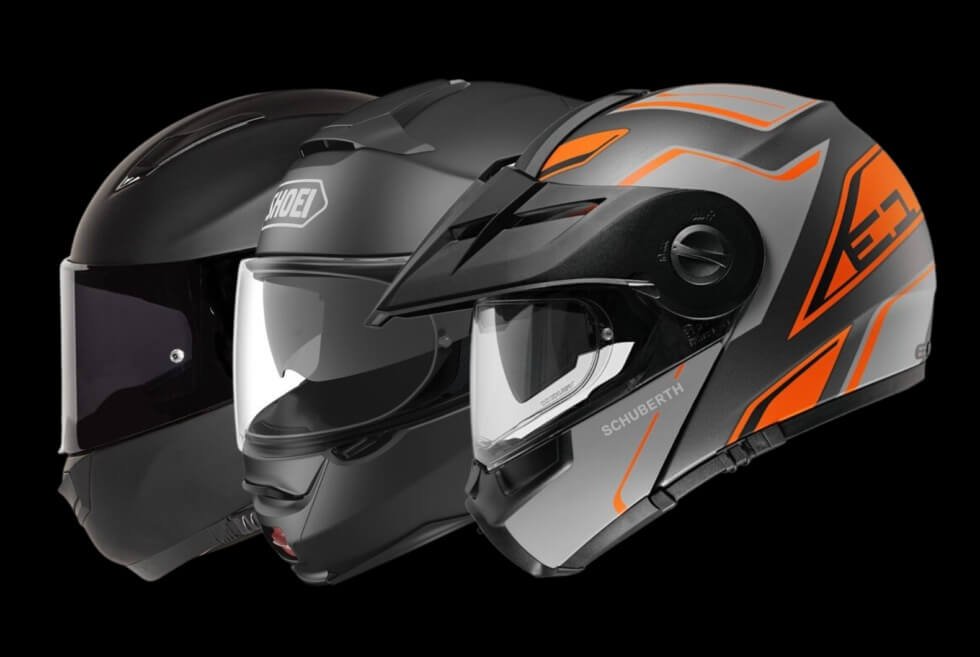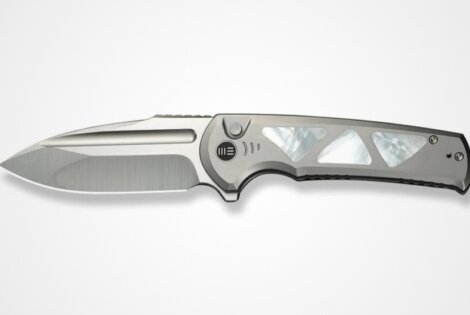Hitting the open road on your bike is a truly wonderful way to see the country, make new memories, and explore cities and towns within riding distance of your house.
Whether you’re just city-hopping, planning a long weekend of riding, or going cross-country, you need to be prepared with the right gear. Top of that list of “right gear”, of course, is the critical piece of protective equipment that is your motorcycle helmet.
Finding the right motorcycle helmet is incredibly important—not just for your protection, but also convenience.
Helmets with built-in Bluetooth headsets can make it easier and safer to take calls and stay in communication when on the road, even letting you call 9-1-1 faster in case of an accident.
Below, we’ve compiled a complete list of the best Bluetooth motorcycle helmets for you, along with all the important details and specs you need to know. Plus, we’ve included a buying guide to help make it easier to find the right choice for you.
Happy riding!
The 10 Best Bluetooth Motorcycle Helmets
Contents
- The 10 Best Bluetooth Motorcycle Helmets
- Shoei Neotec 2 Helmet
- Klim Krios Pro Helmet
- ATLAS 4.0 HELMET
- Harley-Davidson Outrush R Modular Bluetooth Helmet
- ILM Bluetooth Motorcycle Helmet
- Sedici Strada II Parlare Bluetooth Helmet
- Schuberth E1 Endurance Helmet
- FreedConn Motorcycle Bluetooth Helmet BM2-S
- Martian Motorcycle Helmet Modular Full Face Flip-Up Dual Visor Bluetooth Headset
- Gargoyle X07 3-in-1 Helmet
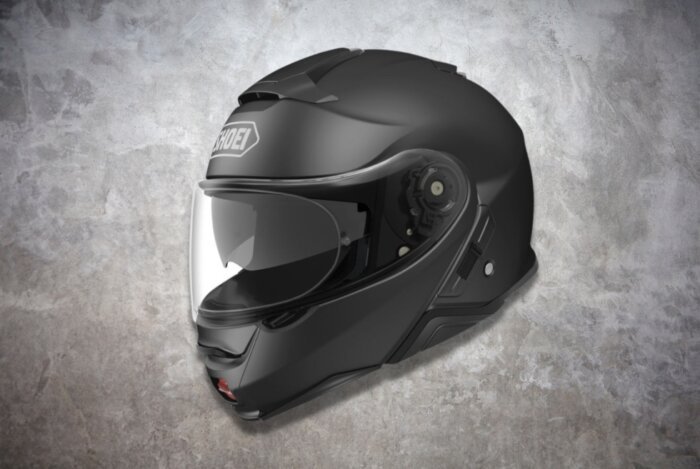
Shoei Neotec 2 Helmet
This helmet is designed for both comfort and maximum protection! The modular design means you can wear it as both open-faced and full-faced, and features built-in air vents that increase air flow through the helmet to keep you from overheating. With an integrated shell spoiler to reduce drag and left and an Aero Deflector on the chin to increase stability, it’s a helmet built with rider comfort in mind.
It’s available in four shell sizes and five liner options, letting you get the fit that suits you best. Thanks to its inner sun shield and integrated UV protection, your eyes will be safe even on the hottest, brightest days. The Noise Isolator cheek pads reduce road and wind noise, and the shell’s cutting-edge design makes it easier to talk on your headphones or headset. However, you’ll have to install the comms system separately if you want integrated, or just wear your own underneath the helmet.
Specs
- Type: Modular
- Outer Shell: Multi-Ply Matrix AIM fiberglass
- Weight: 1750 grams
- Certifications: DOT Approved
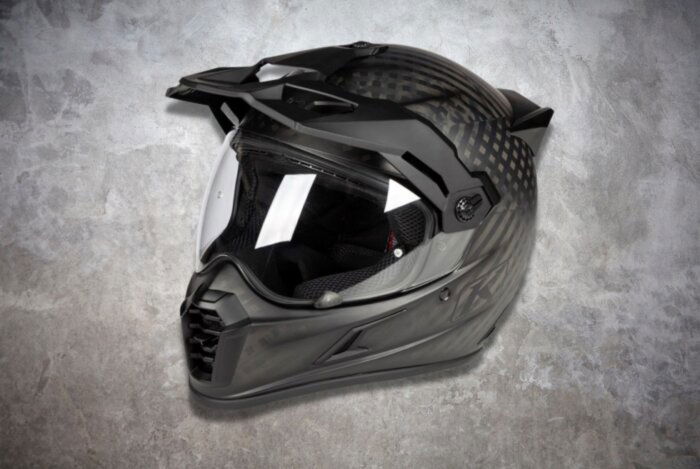
Klim Krios Pro Helmet
The Klim Krios helmet uses cutting-edge Koroyd materials that, when compressed, crush to reduce the impact energy transferred to the head. This inner crush lining tends to be safer than EPS foam (in many cases), and paired with a lightweight carbon fiber shell, ensures your head is protected in case of any accident or collision.
The helmet comes with a Pinlock-ready shield with integrated Transitions Photochromic lens that will adapt to the light conditions around you—transparent in low-light environments, photo-protective in bright daylight. The helmet’s spoiler and visor actually increase head stability when you’re riding at full speed down the road, and you’ll find it’s designed to make your ride more comfortable thanks to the adjustable forehead and chin vents.
The helmet is compatible with Sena 10U Bluetooth headset systems, though you’ll have to purchase the headset separately and get it installed.
Specs
- Type: Full face
- Outer Shell: Carbon fiber
- Weight: 3 to 3.1 lbs
- Certifications: Meets or exceeds ECE and DOT standards
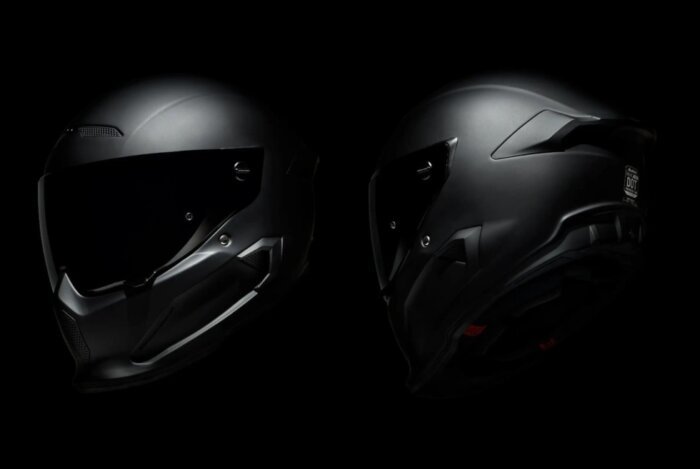
ATLAS 4.0 HELMET
When buying the Atlas 4.0 brand-new, you have the option to add on an integrated Bluetooth headset system (for an added price), so it’ll arrive at your home ready to operate. It’s one of the first Atlas helmets to not only attain DOT certification, but also adheres to the recently updated ECE 22.06 safety standard. The headliner is actually made using a non-Newtonian fluid that offers amazing energy dissipation to protect your head against impact or trauma.
The full-face helmet has a classic “stealth fighter” look that is truly badass when paired with a road bike, and the iconic matte finish is sleek and ultra-stylish. Yet it also lives up to your comfort requirements, offering tailor-made cheek pads, headliner, and moisture-wicking interior fabric liner. For the price, you won’t find many better.
Specs
- Type: Full face
- Outer Shell: Optical grade ballistic polycarbonate
- Weight: 1700 grams
- Certifications: DOT and ECE 22.06
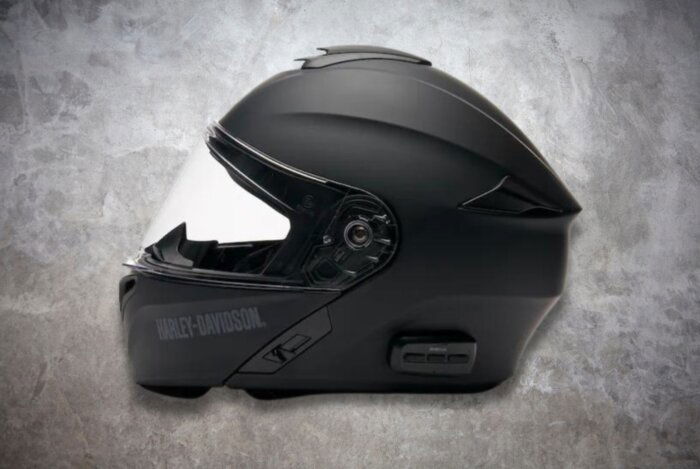
Harley-Davidson Outrush R Modular Bluetooth Helmet
For those who want their comfort their way, this modular helmet makes it easy to switch between full-face and open-face as desired. It features three air vents to keep your head cool, an inner lining that is both removable and washable, and a fully integrated sound system with high-definition speakers and amped-up bass to make listening to music exponentially more enjoyable.
It also comes with its own integrated Bluetooth system, with a 4.1 headset and hands-free controls. It’s also designed with advanced noise control and wind noise reduction to ensure no background sounds interfere with your conversations or entertainment. Thanks to the 900-meter range, you can stay in touch with the rest of your crew on the highway, and it connects you to up to 4 riders at a time.
Specs
- Type: Modular
- Outer Shell: PC/ABS injection shell
- Weight: 3 lbs. 13 oz.
- Certifications: Meets DOT standard FMVSS 218 requirements. RF certified in the U.S., Canada, EU28 & UK only.
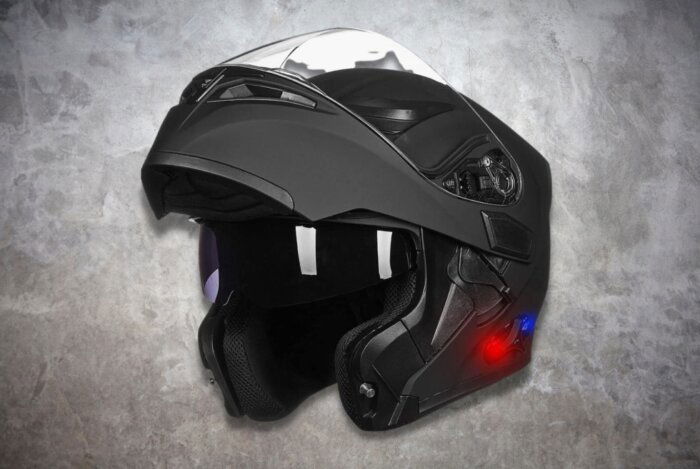
ILM Bluetooth Motorcycle Helmet
If you want a budget-friendly option for a first-timer, this is the helmet for you. It’s made using an ABS plastic shell that is durable enough to protect you in case of a collision, but be aware that it’s a HEAVY helmet (5.5 pounds) so it may contribute to neck pain or fatigue. Comfort features include a dual visor, air ventilation system, and replaceable liners (for when you sweat a lot).
The helmet comes with integrated Bluetooth 3.0, offering one-touch controls so you can answer/make calls, listen to your music, or operate the radio/sound system. The built-in speaker and headset also feature noise cancellation and voice commands. The intercom system lets you pair with three other riders, and offers 2-rider intercom communication with a range of up to 500 meters. With 12 hours of phone talk time, 110 hours of standby, and 8 hours of music playback, it’ll definitely last for the duration of your trip.
Specs
- Type: Modular
- Outer Shell: ABS
- Weight: 5.59 pounds
- Certifications: Meet or exceed DOT safety standards
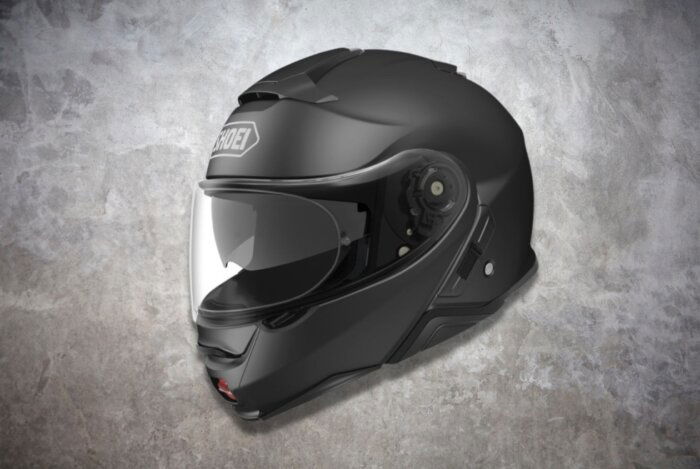
Sedici Strada II Parlare Bluetooth Helmet
The Sedici Strada II Parlare Bluetooth Helmet uses a mixture of aramid fiber and fiberglass for the shell, producing a harder, more impact-resilient outer protective layer. Add to that a dual EPS crush liner and removable cheek pads, and you’ve got great protection in this full-face helmet. The multiple exterior vents bring in cool air and prevent overheating, while the removable forehead and temple foam panels allow you to expand the helmet’s interior to get more space.
You can purchase the helmet with the SENA DWO-6 Bluetooth v4.1 system integrated, offering up to 1000-meter range, group intercom compatible with up to four riders at a time, dual A2DP, advanced noise control, FM radio (with sharing), both intercom and phone VOX, and an HD intercom and phone. Battery life is around 8 hours for talk time, with 7 days on stand-by mode. Best of all, you can pair it with a proprietary smartphone app that gives you total control over your on-the-road entertainment.
Specs
- Type: Full face
- Outer Shell: A proprietary blend of fiberglass and aramid fiber
- Weight: 3.3 lbs.
- Certifications: Meets or exceeds DOT and ECE-22.05 standards
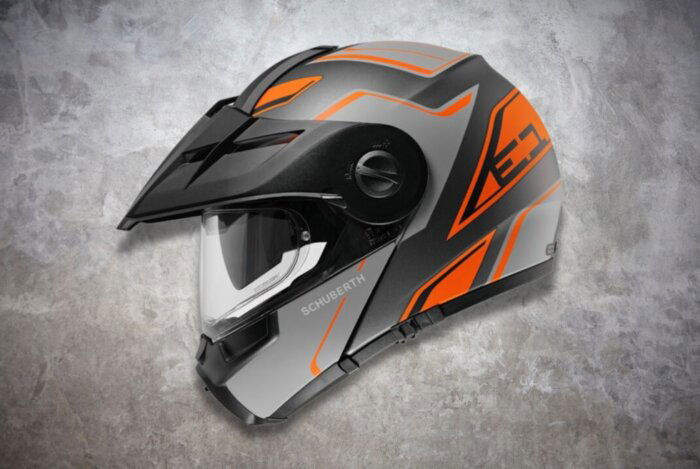
Schuberth E1 Endurance Helmet
Off-roaders, this is the helmet for you! The helmet is designed in a high-tech aeroacoustics lab, optimized to be both aerodynamic and improve acoustics in and around the helmet. The Anti-Roll-Off System ensures the helmet stays securely put on your head in high speed and high-impact environments. Thanks to the articulating peak visor, you can adjust the helmet’s visor to exactly the right position for your comfort.
The helmet comes with a built-in Bluetooth SRC-System, which works as intercom and can connect to all your devices: smartphone, GPS device, and MP3 player.
Specs
- Type: Full face
- Outer Shell: S.T.R.O.N.G. fiber (fiberglass)
- Weight: Roughly 4 lbs.
- Certifications: DOT
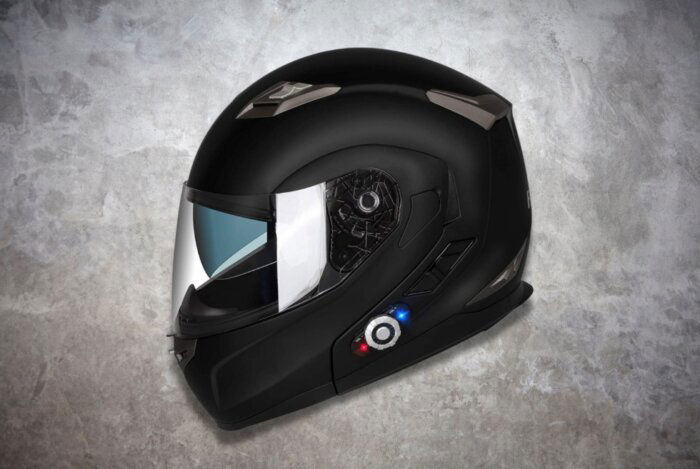
FreedConn Motorcycle Bluetooth Helmet BM2-S
The intercom system built into this helmet gives you a range of up to 1640 feet, compatible with 3 riders pairing or 2 riders talking. The Bluetooth 3.0 technology lets you pair the helmet with your smartphone, GPS device, radio, and intercom, letting you use voice controls and the one-button helmet-mounted controls for easier operation. With 8 hours of intercom talk time and 110 hours of standby time, it’s got more than battery enough for a full day (or three) on the road.
Specs
- Type: Full face
- Outer Shell: ABS Injecting Molding
- Weight: 5.04 lbs
- Certifications: Meets and exceeds DOT safety standards
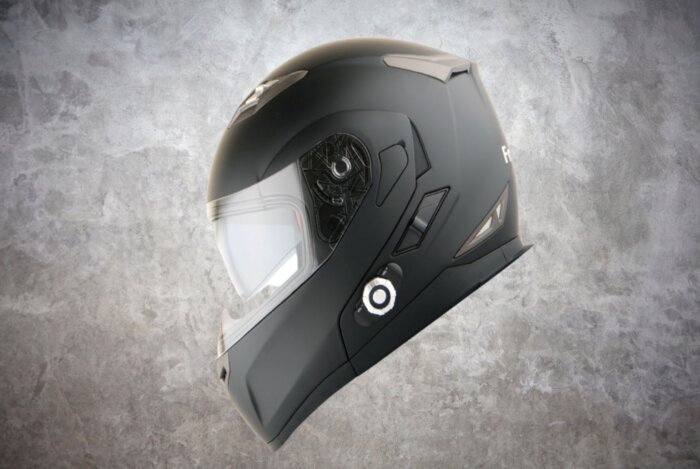
Martian Motorcycle Helmet Modular Full Face Flip-Up Dual Visor Bluetooth Headset
This modular helmet is designed for comfort and convenience, with an advanced build that lets you choose the best position for your ride. The dual lens design offers excellent protection for your eyes even in bright-light environments, with an inner smoked lens to block out sunlight and a clear outer lens that won’t interfere with your vision.
The integrated Bluetooth headset has a 500 meter range, can communicate with three riders at once, and features advanced DSP echo cancellation along with noise suppression technology. It packs 12 hours of phone talk time, 9 hours of intercom talk, and 120 hours of standby time. Plus, it charges fully in just three hours.
Specs
- Type: Modular
- Outer Shell: ABS
- Weight: 2.52 kilograms
- Certifications: DOT Approved
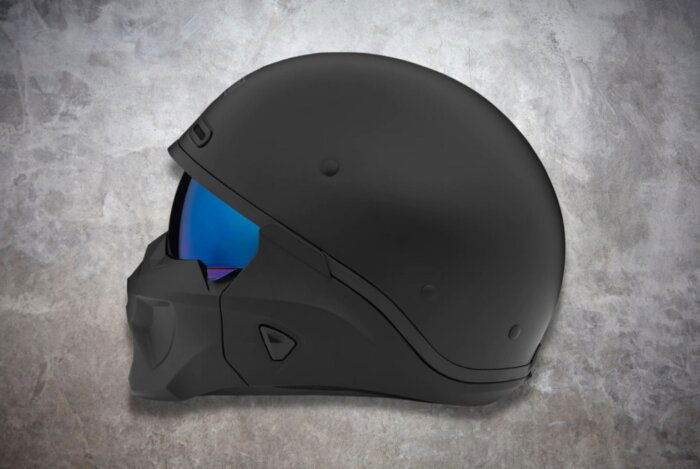
Gargoyle X07 3-in-1 Helmet
Prepare for a helmet like no other! The 3-in-1 helmet lets you choose between full face, open face, and half styles, giving you total freedom to ride the way you like it. Thanks to its sturdy fiberglass shell, you can roar down the road trusting your head is protected.
The helmet is compatible with the BOOMTM Audio 20S Bluetooth® Helmet Headset (sold separately). Thanks to its micro-lock buckle, front and top vents, and moisture-wicking interior lining, you’ll ride in comfort and style all day long.
Specs
- Type: Modular
- Outer Shell: Fiberglass
- Weight: 1.28 kilograms
- Certifications: Meets ECE 22-05 requirements
Bluetooth Motorcycle Helmets Buying Guide
Now that you’ve looked at the helmet options above, it’s time to take a closer look at what features to look for in a Bluetooth motorcycle helmet, what makes a helmet “good” or “unsuitable”, and how to know which helmet is the right one for you.
To start off, we need to understand the legalities behind wearing helmets in general, and Bluetooth helmets specifically…
Legal Requirements for Motorcycle Helmet
In the U.S., there are a number of states that don’t require you to wear a helmet—including Iowa, New Hampshire, and Illinois. The rest of the U.S. states have some form of legal requirement—either for those under the age of 18, or for all motorbike riders.
The Insurance Institute for Highway Safety and Highway Loss Data Institute have a complete guide to the motorcycle laws within the U.S. that you should check out in order to know the laws in your specific state.
In Canada, all 10 provinces and three territories have laws that require you to wear a helmet when on a motorcycle. That includes both the driver and any passengers, regardless of age.
The helmets must be certified by either the DOT, Snell Memorial Foundation, or ECE. They must also clearly display the certification label.
According to the B.C. government website, “A motorcycle helmet that meets these standards contains a rigid head covering that consists of a strong, stiff outer shell and a crushable liner. The stiff outer shell must protect the head by distributing the impact throughout the surface of the helmet, and the crushable liner must protect the head by absorbing the energy of the impact.”
In the UK, all riders are required to wear a motorcycle helmet, regardless of age. The helmets worn on UK roads must meet the standards of British Standard BS 6658:1985 (and display the BSI Kitemark), UNECE Regulation 22.05, or a European Economic Area member standard that meets the same standards as the previous two.
The UK government has the SHARP program, which details all the approved helmets and even assigns them a rating according to the amount of protection they provide.
Motorcycle Helmet Fitting Guide
Getting the right fit on your motorcycle helmet is absolutely crucial for your safety. According to one study, 12% of helmets got lost during the accident, which means they offered no protection for their wearers. Making sure the helmet fits is a crucial step in ensuring that it stays in place on your head in case of an accident, offering you the protection it’s designed to.
To make sure the helmet fits:
- Get your head measured. You can use a sewing tape measure (or even a contractor’s tape measure) to take the measurements yourself. Run the tape around your head, just above your ears, and take the measurement at your forehead. Or, if you prefer, go to a sports outfitter or motorcycle store and have a more accurate measurement taken by professionals. Knowing your head measurements will help you to find the helmet that fits just right.
- Test it out. Once you’ve got your head measurements, it’s time to try on the helmet/s you’re considering. Place it on your head, secure the chin strap (with space enough to fit two fingers between your jaw and helmet), adjust any quick-release buckles, and make sure you can feel the entire helmet against your head. If there are any “pressure points” with extra tension, you may need to size up or choose a different helmet.
- Twist the helmet. Use your hands to twist the helmet on your head side to side. If the helmet fits correctly, your head will twist with it. Your cheeks should remain in firm contact with the cheek pads. If there is any slipping or shifting, the helmet may be too large.
- Tilt your head. Tilt your head to the right and left, forward and backward. If you feel any slipping or shifting, the helmet is likely too large. A correctly sized helmet will not shift at all no matter how much you move your head around.
- Try rolling it off. The final test is to try and roll the helmet off your head. Tilt your head forward and have someone push up against the helmet’s rear base, trying to roll it off the front of your head. Make sure the chin strap is done up before you do this test. If the helmet is sized right and the straps and buckles are adjusted properly, the helmet will stay securely in place. If the helmet comes off easily in the showroom, however, it’s all but guaranteed to come off in a crash, too.
Honestly, this is a simple process that takes all of 10-15 minutes to do correctly, but it can literally save your life in case of an accident!
Why Consider a Bluetooth Motorcycle Helmet

You know that you NEED a well-sized, sturdy helmet to protect your head while riding your motorbike on the road. But why should you look specifically for a Bluetooth motorcycle helmet, considering you’ll ultimately pay a higher price for the purchase?
Here are a few reasons:
- Take calls on the road. Thanks to the integrated Bluetooth headphones/headset, you can answer calls hands-free (safely and legally) while zipping through town or roaring down the highway. No need to stop and pull over to take a call; just hit the button on your headset and the Bluetooth-enabled helmet answers the call for you.
- Stay in touch with your group. If you’re riding in a group—of any size, really—you’ll need to be able to stay in touch, communicate changes in plans, or let those riding ahead or falling behind know what’s going on. It’s just the smart way to make sure everyone in your group is safe and sticking together.
- Listen to something. What could be more epic than blazing down the open road listening to your favorite playlist, podcast, radio station, or audiobook? Being able to listen to something while biking makes any trip more enjoyable.
Pretty clear to see it’s worth paying a bit more for a quality Bluetooth motorcycle helmet, isn’t it?
Integrated vs. Attachable
When shopping for Bluetooth motorcycle helmets, there are essentially two types to consider: integrated and attachable.
Helmets with integrated systems will feature the Bluetooth headsets already built into the helmet, so you don’t need to add on extra headsets or headphones.
Attachable Bluetooth helmet systems are designed to be added into helmets that are built to accommodate headsets and headphones, but don’t have them built into the helmet itself.
(Note: It’s possible that your current motorcycle helmet is designed to accommodate an attachable Bluetooth system. It’s worth checking it out just in case!)
A lot of helmets can be fitted with aftermarket comms/Bluetooth systems, but only a select few (including those on the list above) come with integrated comms systems.
Mesh vs. Bluetooth
When shopping for Bluetooth helmets, it’s important to understand the difference between Bluetooth and “mesh” systems.
For a solo rider, a Bluetooth helmet lets them connect easily to their smartphone, motorbike’s built-in audio system, or a headset. It’s simple and easy—just pair the helmet with your phone or bike and you’re good to go!
But if you’re riding in a group, typically you’ll use Bluetooth for the “comms” system, letting you communicate between riders. Bluetooth comms systems are designed with “daisy-chain pairing”, with each helmet/comms system connected in a chain to the others. However, if the riders fall too far behind/move too far ahead, the signal may drop, and the entire daisy-chain may become cut off. To restore the signal, the group will have to manually reboot and reconnect. The more riders there are, the weaker the signal and the more prone to dropping out.
That’s why more high-tech helmets are designed using “mesh” comms. Mesh comms operate more like a walkie-talkie, broadcasting a signal that connects with every compatible device in its range. You can select from a number of mesh channels, and the comms system will automatically reconnect in as dynamic and efficient a web with as many different riders as possible. The result is a more stable connection.
However, helmets with mesh comms tend to be significantly pricier and are produced by only a handful of brands. Bluetooth comms systems are much more widely available and affordable.
Critical Factors to Consider
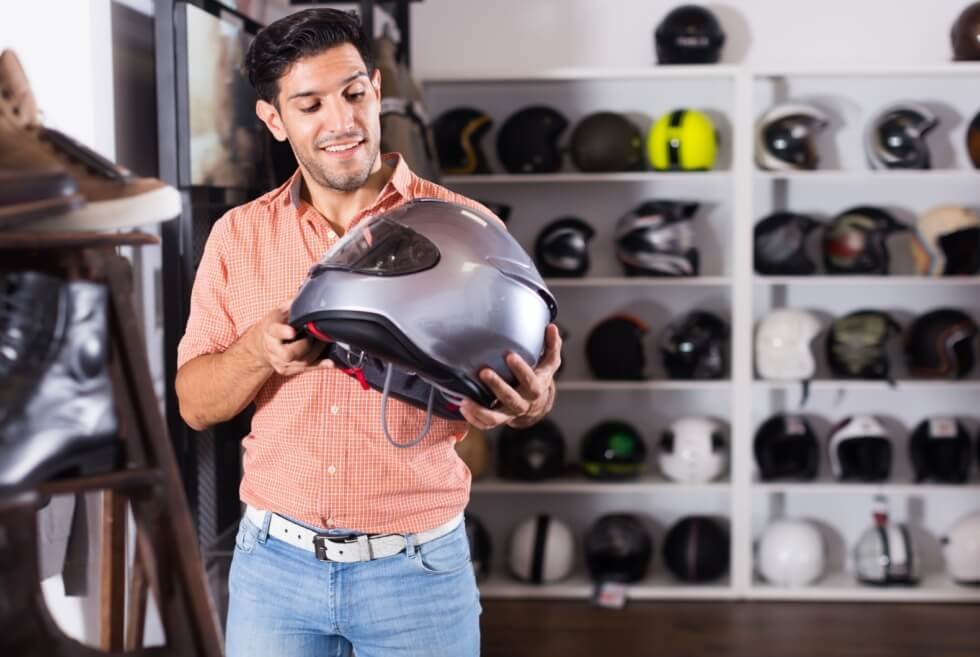
Here are the most important factors to consider (aside from those listed above) when choosing the perfect helmet:
Material – Motorcycle helmets are typically made in three layers: the padded comfort layer around your face, the crushable EPS foam layer that absorbs the impact, and the hard, rigid protective outer shell that provides the first layer of protection in an accident.
Typically, the outer shell is made from one of three materials:
- Polycarbonate, which is lightweight and inexpensive. It flexes when it absorbs energy, transferring that energy to the inner crush layer. It’s the least reliable option for a helmet, though the most affordable.
- Fiberglass composite, which costs a bit more but is roughly the same weight as PC. It not only flexes when absorbing energy, but actually crushes and splits. This reduces the amount of energy transferred to the crush layer, offering much better protection for your head than polycarbonate.
- Carbon fiber, which is ultra-light, ultra-durable, and, of course, fairly pricey. It actually distributes energy upon impact rather than just flexing or flexing and splitting, so it helps to diffuse the force that transfers to the crush layer. It’s the sturdiest and safest material for your helmet’s outer shell, but will cost the most.
Helmet Styles – Helmets come in a wide range of styles, including:
- Full face, which covers the entire head and face to offer maximum protection.
- Open face, which has no chin guard so your face is exposed.
- Half, which just covers the top of your head and leaves your face and the lower half of your head exposed.
- Modular, which are sort of a cross between full and open face helmets. They let you flip up or entirely remove the lower section of the helmet protecting your face, turning it from full face to open face and back again.
- Motocross/off-road, which are designed for off-road and extreme sport applications. They usually have built-in sun visors, venting, and more chin protection. Some will be visorless, so you’ll need to wear goggles.
You can clearly see which offers the most protection (full face), but the other styles may be more comfortable and wearer-friendly. It’s a factor to consider for sure!
Comfort – The helmet you choose should be comfortable enough that you can wear it for long hours of riding. That means it fits correctly, it has ample ventilation to let your head/face breathe, and isn’t so heavy that it strains your neck.
Weight – This goes hand-in-hand with both your comfort and safety. If the helmet is too heavy, you may not want to wear it, which means you’ll be putting yourself at risk. Or you may feel the strain in your neck, which can lead to spinal problems, tension in your shoulders, and ultimately joint issues.
Helmets come in three standard weights:
- Light, which includes helmets under 3.25 pounds
- Average, which includes helmets between 3.25 and 4 pounds
- Heavy, which includes helmets over 4 pounds
Heavier helmets are typically cheaper and more available but tend to increase fatigue. Lighter-weight helmets use higher-quality materials that cost more, so they end up being pricier. However, for long-distance travel, they’re also safer and more comfortable—thus worth the added cost for sure!
Noise Reduction – Because you’re going to be talking and listening on your Bluetooth headset, you want to make sure the helmet is designed specifically to reduce noise. Many Bluetooth helmets feature noise suppression technology built into the helmet and/or the headset, which helps to minimize the noise of both the wind whipping past and the road noise all around you.
Controls – Some Bluetooth helmets will come with integrated buttons that let you control the headset/headphones on your helmet—answering/ending calls, playing/pausing music, skipping songs/stations. However, in order to use these controls, you have to take one hand off the handlebars and fiddle around with the helmet. This is both potentially dangerous and a bit annoying.
It may be worth looking into one of the two better options:
- Handlebar-mounted controls, which let you control your Bluetooth headset/headphones without removing your hands from the handlebars.
- Voice controls, which use voice commands (similar to the way you use Apple’s Siri or Amazon’s Alexa).
These tend to be pricier, but well worth the expense for safer operation when on the road!
Battery Life – Bluetooth helmets are more than just a helmet; they also operate a battery-powered Bluetooth headset/headphones, meaning they need a good battery with solid battery life and (ideally) a short recharge time. The longer you spend on the road, the longer the battery life you need.
Range – The Bluetooth signal range will determine how far away you can get from the other bikes in your group. Typically, this won’t be a huge factor for solo riders, as they’re always within range of their smartphone. But if you’re riding in a group, it can be an important one to consider.
Price – Last but certainly not least, you want to consider the cost of the helmet.
Quality entry-level helmets will run you around $300, mid-range and premium helmets will cost you from $500 to $750 (give or take), and top-of-the-line helmets will hit the four figures easily.
What makes helmets pricier include the Bluetooth system, the materials (carbon fiber), and the comfort features (integrated airflow/ventilation, sound management, etc.). You don’t have to spend a fortune on the highest-end helmet on the market, but it’s worth shopping around the mid-range and premium selections in order to get a helmet you know will offer excellent protection, comfort, and convenience.


